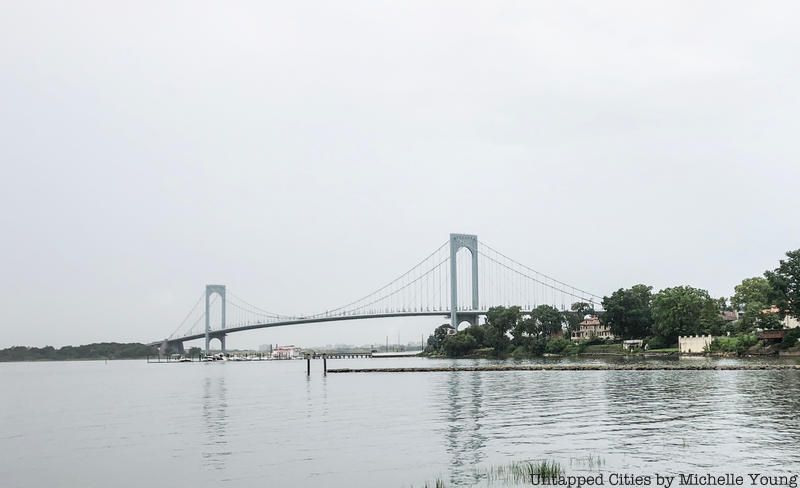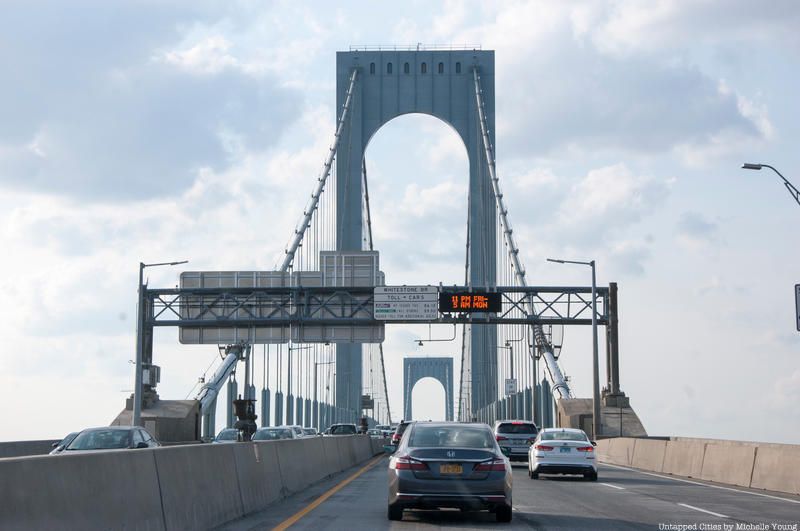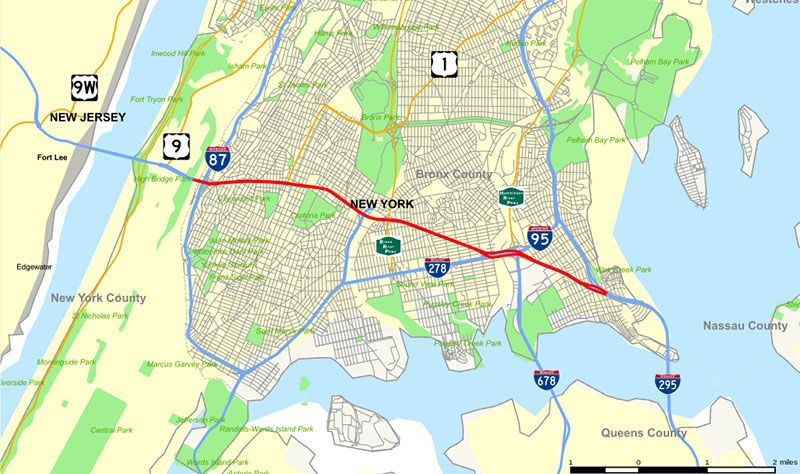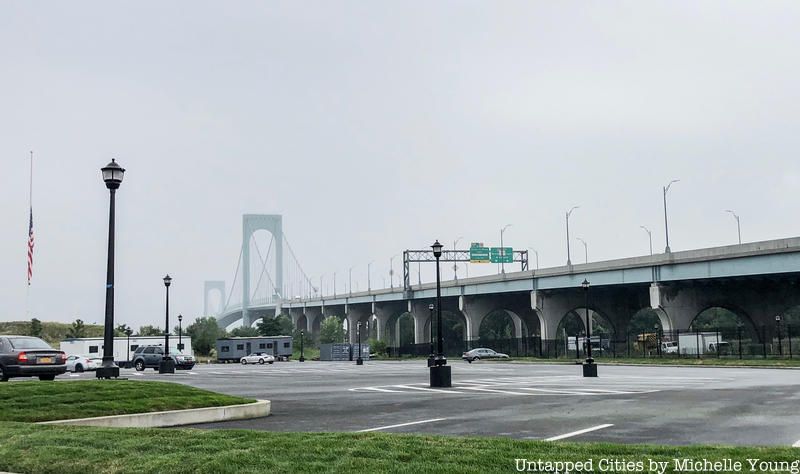The Berkshires Bowling Alley that Inspired "The Big Lebowski"
It’s been 36 years since the release of The Big Lebowski, the irreverent cult comedy by Joel and Ethan


When New York was selected to host the 1939 World’s Fair, Robert Moses convinced the city to choose the Corona Ash Dump as the site for the event. Described by F. Scott Fitzgerald as the “valley of ashes,” it was filled with garbage, horse manure and ashes from coal-burning furnaces. Still, Moses saw an opportunity to clear the land and transform it into Flushing Meadows–Corona Park.
On April 30th, the opening day of the 1939 New York World’s Fair, drivers made their way to the park using the Bronx-Whitestone Bridge, which officially opened to traffic on April 29, 1939 – just 23 months after construction first began in June of 1937. The project was completed six months ahead of schedule so that drivers could specifically use it as a “gateway” to the fair on its opening day, which was timed to coincide with the 150th anniversary of George Washington‘s inauguration.

The Whitestone Bridge was contrived by Swiss-American engineer, Othmar Ammann, the mastermind behind several of New York City’s superstructures, including the George Washington Bridge and the Verrazano-Narrows Bridge. It was unique in that it did not utilize a stiffening truss system like other suspension bridges. Instead, I-beam girders gave the bridge a sleek, Art Deco-inspired design, which has long been admired by architects. Even Robert Moses, the city’s master planner, stated the following at the Bronx-Whitestone Bridge ribbon-cutting ceremony:
“[The Bronx-Whitestone Bridge] is architecturally the finest suspension bridge of them all, without comparison in cleanliness and simplicity of design, in lightness and absence of pretentious ornamentation. Here, if anywhere, we have pure, functional architecture.”

Although the design of the Whitestone Bridge was aesthetically sound, it was structurally and fundamentally flawed. The original Tacoma Narrows Bridge in Washington, which utilized the same general blueprint (reinforced by I-beam girders), collapsed into the Puget Sound in 1940.
Questions surrounding the safety of the Whitestone Bridge began surfacing shortly after its opening, and upon closer examination, it was found to be unstable during high winds. To reinforce the structure, steel trusses and eight stay cables – two per tower on each side – were installed in the 1940s. In mid-to-late 2003, those stabilizing components were removed and new lightweight fiberglass fairings were installed along the existing plate-girder deck, bringing the structure closer to its original, seamless design.

In preparation for the construction of the Bronx Whitestone Bridge, two major recreational areas were developed in the Bronx and Queens. In 1937, the city acquired the land for Ferry Point Park on the Bronx side of the bridge, which originally belonged to the Roman Catholic House of the Good Shepherd. Today, it is comprised of a community park, a public golf course (Trump Golf Links at Ferry Point) and vast playing fields.
Francis Lewis Park in Queens honors early American merchant Francis Lewis, who moved to Whitestone, New York after retiring from the trading business. The recreation area is comprised of two scenic overlooks, a bocce court and several winding paths.

In August 2001, MTA Bridges and Tunnels initiated a $286 million restoration process of the Bronx-Whitestone Bridge, which included efforts to bring the bridge back closer to its original design. Along with the removal of its heavy steel trusses, the old concrete bridge deck was replaced with an orthotropic deck and improvements were made to the electrical, lighting and drainage systems. The overhaul was completed in 2008 and the structure lost 6,000 tons (a quarter of its total suspended weight) in the process.

Two types of street lights, Type 41S (“S” for single arm) and Type 41T (‘T’ for twin arms) are nicknamed “the Whitestones” because they were first brought into popular use on the Whitestone Bridge. According to Forgotten NY, the lampposts were generally erected on elevated parkways and some expressways, although they are rare to come by nowadays.

Lanes of the Bronx-Whitestone Bridge. Photo via MTA
When the Bronx–Whitestone Bridge first opened to traffic in 1939, it featured pedestrian walkways and four lanes for vehicles. The walkways were removed after a 1943 windstorm temporarily shut the bridge down. Following the incident, two more traffic lanes were added and the existing lanes were widened.
To help bicyclists cross the bridge, QBx1 buses utilized front-mounted bike racks. However, the Metropolitan Transportation Authority eliminated the racks after absorbing the b
us routes, which were formerly operated by the Queens Surface Corporation. Bicyclists must now use the Triborough Bridge. \
\
Although the Bronx-Whitestone Bridge was originally proposed in 1905, its construction was severely delayed due to concerns from local residents who feared that the traffic would ruin the rural “character” of Queens. At the time, developers had already started to plan and build upscale neighborhoods on Long Island in anticipation for the new bridge. Even so, residents of the existing communities were able to keep the project out of the planning phase for close to a 25 years until Robert Moses, who wanted people to visit his Long Island state parks, came into the picture.
Moses was also motivated by a number of other reasons. At the time, the Triborough Bridge had become increasingly congested with traffic and the proposed Whitestone Bridge would have helped to alleviate some of the burden. Moses also wanted to make the fairgrounds of 1939 World’s Fair more readily accessible to the public.
In 1937, the project officially received the green light from the New York State Legislature.

Photo from Wikimedia Commons by Chinissai
In 1959, the Whitestone Bridge was officially designated an interstate highway (Interstate 678). In order to be included in the Interstate system, commercial trucks and buses had to be allowed onto the road. The Bronx and Queens approaches were consequently reconstructed from parkway to expressway standards. Prior to this change, trucks were only able to enter the bridge at ramps near the Bronx and Queens approaches.

In January 1961, Throgs Neck Bridge officially opened for use, immediately helping to reduce the traffic volume on the Whitestone Bridge, which ferried roughly 30 million vehicles per year. By the 1970s, however, congestion on the Bronx-Whitestone actually exceeded pre-Throgs Neck level. Today, it carries roughly 110,000 vehicles each day (over 40 million per year).
Next, check out Remnants of the 1939 World’s Fair and 7 Never-Built Robert Moses Projects.
Subscribe to our newsletter